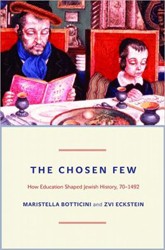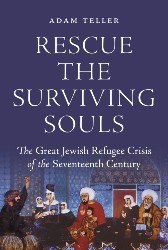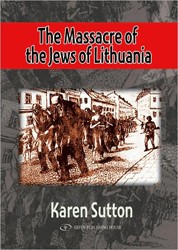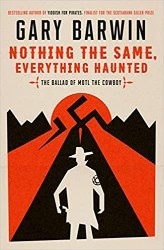Jewish life in nineteenth century Eastern Europe is often mythologized and romanticized. For most Jews today, it exists as a dim past based on old photos and collections of Hasidic stories. However, the ever-expanding yeshiva movement throughout the contemporary Orthodox world still carries forth at least one crucial legacy of this lifestyle — the fervent commitment to the study of Talmud practiced by a large percentage of the Eastern European Jewish male population starting in pre-puberty.
In The Legacy: Teachings for Life from the Great Lithuanian Rabbis, Rabbis Wein and Goldstein provide a hagiographic tribute to their teachers and their teachers’ teachers who came from this milieu. Stories, anecdotes, and background information about some of the illustrious scions of the Lithuanian yeshiva experience provide interesting and instructive reading. The section on the influence of the Mussar movement is particularly worthwhile. The qualities of refinement, character development, reserve, and discipline elevated to a lifestyle left their mark on those who carried on this legacy in the yeshivas of the twentieth and twenty-first centuries.
Many Lithuanian luminaries are portrayed in loving vignettes. We are privy to conversations and stories that reflect the character of these Torah giants. Until recently this type of literature focused on Hasidic rabbis. Rabbis Wein and Goldstein have added to the corpus of non-Hasidic rabbinic portrayals started by ArtScroll.
One of the characteristics of nineteenth century Wissenschaft des Judentums (science of Judaism) was the beginning of serious historical studies of Hasidism. It wasn’t until recently, however, that equal research was devoted to the opponents of Hasidism, the Lithuanian yeshiva heads, most prominently the Gaon of Vilna and his students. One of their essential differences is the emphasis on study as opposed to more expressive forms of devotion. First published in Hebrew in 1995, revised in 2005 and now translated into English, Lithuanian Yeshivas of the Nineteenth Century provides that counterpoint. Although this is a work of prodigious scholarship, it is written in a way that non-historians can also appreciate.
Although there were many yeshivas throughout Eastern Europe, Volozhin, Telz, Slobodka, and the Kovno Kollel were selected for this book because they were the models for the great yeshivas of today. Each was revolutionary in its own way, especially Volozhin. Much space is devoted to analyzing how and why the yeshiva system provided an antidote to the crisis of assimilation.
One of the innovations of the Volozhin yeshiva, founded by the main disciple of the Gaon of Vilna, R. Chaim of Volozhin, was its independence from the town in which it was situated. Funding came from emissaries who traveled all over. There were no terms and no vacations, no beginning and no end. Students came throughout the year, and study took place 24/7. Even following the fast of Yom Kippur, many students remained immersed in their Talmudic tomes while others broke the fast. The only requirement for entry was advanced knowledge of Talmud and the ability to study independently. Some lectures were given on the tractate being studied, but students had total freedom as long as time was used productively. The most grievous offense was wasting one’s time.
The internal structure, study schedule, politics, finances, student activities, student activism, personalities of the various deans, disputes, family feuds, attitude to the Haskalah, Zionism, secular studies, and the Russian government, are all carefully documented and analyzed based on first hand accounts, memoirs, official documents, Tsarist archives, and rabbinic writings by the principal rabbis. Of importance is the section dealing with the innovative analytical method of study introduced by R. Hayyim Soloveitchik of Brisk during his tenure at Volozhin. This approach was disseminated in Israel by his son Rabbi Yizhaq Ze’ev Soloveitchik, and in America by his grandson, Rabbi Joseph Soloveitchik of Yeshiva University and his disciples.
The Slobodka Yeshiva was heavily influenced by the Mussar movement advocated by R. Yisrael Salanter (1810−1883) and Mussar was treated as an auxiliary field of study next to the Talmud. The Telz Yeshiva introduced formal examinations, division into classes based on ability, and certain other practices found in secular schools, though Talmud still remained the mainstay of the curriculum. The Kovno Kollel enabled young married men to study unencumbered by wives and children. This almost monastic environment has evolved into the present kollel system (institute for advanced Talmud study), which is not celibate.
Study for its own sake was the goal of the yeshiva. Those seeking rabbinic ordination in order to secure employment would study certain law codes of practical application and be certified as rabbis by their teachers. The yeshiva was not a rabbinical school to train rabbis, although at times they may have indicated this to the Russian government for political purposes.
These two books offer entré into a lost world. However, the values embodied in these institutions are still promulgated in hundreds of yeshivas throughout the world. The great yeshivas in Jerusalem, Lakewood, Cleveland, New York, Brooklyn, London, and elsewhere are direct descendants of the institutions profiled in this book.





